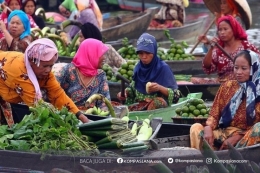On the demand side, the location of jobs, structural change in the labor market and employer discrimination towards Indigenous peoples. So, in this case, their rights to obtain a sustainable job are denied even when they first step into the interview room. The lack of access towards decent works among the Aboriginals prevent them in getting the basic necessities such as healthcare or provision to their children's education, thus, with the institutionalized discriminations, endless poverty cycles will continue.
Fig.1 The Unemployment Rate Comparison between The Indigenous and Non-Indigenous
In solving this gap in the employment rate, providing non-segregated and equal access to education is critical. The current data shows that about 62% of Indigenous students finished year 12 or equivalent in 2014-15, compared to 86% of non-Indigenous Australians. There are also large achievement gaps between Indigenous and non-Indigenous students.
For example, 47% of Indigenous meet the minimum proficiency science standard in TIMSS compared to 77% of non-Indigenous students (The Conversation, 2017). This education opportunity for indigenous can still be improved by increasing the public spending on public and private schools especially in rural area. Incorporate the existing NGOs will answer the lack of human resources to teach the aboriginals in the most secluded area even in Kiwirrkura of Gibson desert.
The specified curriculum designed for rural aboriginal communities must also be provided as the curriculum that requires high-tech and higher critical thinking in the classroom is not relevant in the area where digitalized information is hardly accessible. It is also critical to provide scholarships for varsity level directed to the most potential aboriginals with the basis of contract.
This contract will ensure them to go back into their community to develop their homeland, incorporate the latest technology to improve the rural farming or provide P2P lending for women that cannot access the formal bank are just a few examples on how the varsity education can catalyze the modernization of the rural area.
The powerlessness of aboriginals are reflected when they must work in a formal institution from which they are denied and they can no longer self-sustain with the plentiful natural ecosystem given by the so called "Baimi" they once had. However, in the present moment, the new master of the land also mercilessly rob the sacred natural habitat by polluting the ecosystem of Barwon or Namoi river.
Thanks to the major corporates who own political decisions with their capitals, they can sell the water supplies to the higher bidder and those two examples are just a surface layer of numerous cases massive exploitation on natural resources and mismanagement of pollution to the entire vistas. In other cases, the government seemingly do not care about the sanctity of land that the natives praise, the connection of the indigenous towards their land and ancestors.
These public disrespects come with the case of The 800-year-old Djap Wurrung trees that were slated to be bulldozed and have bitumen poured over them to extend the Western Freeway near Ararat, Victoria. This bulldozing game is peculiar when such a holy site is sacrificed to save drivers' two minutes. "What is two minutes to 800 years?". This massive destruction of centuries is described as "an ultimate destruction of our culture" according to Gamilaraay elder--Virginia Robinson (Allam, 2019).
One of the clan called Walgett have to live on bore water indefinitely. Bore water is high in mineral content, especially sodium. It kills gardens and discolours basins and bathtubs.
These coercive actions need to be prevented by the united voice of all tribes descendants and NGO that focus on humanity issues. Non-Government organisations (NGO) have taken on responsibility of the racial conditions seen in Australia. They have filed numerous reports to the UN addressing the racial discrimination problems found in Australia.







